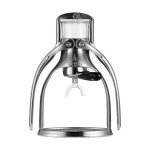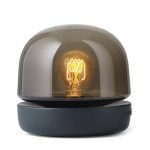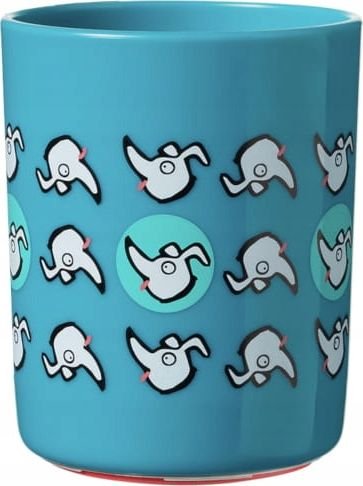Children's Dishes
When it comes to children’s dishes, there are various options available.
Plastic: Plastic dishes are a popular choice for children due to their durability, lightweight nature, and ease of handling. Look for BPA-free plastic dishes that are safe for children and dishwasher-safe for easy cleaning.
Stainless Steel: Stainless steel dishes are another option for children. They are sturdy, resistant to breakage, and can withstand rough handling. Stainless steel dishes are often free from harmful chemicals and can be a long-lasting choice.
Melamine: Melamine dishes are known for their durability and resistance to breaking. They are lightweight and often come in vibrant colors and fun designs. However, it’s important to note that melamine should not be used for hot foods or microwaving, as it can release harmful chemicals when heated.
Enamelware: Enamelware dishes, typically made of metal with a porcelain enamel coating, are durable and can withstand rough handling. They are often available in colorful designs and can be a good option for children’s dishes.
Ceramic: Ceramic dishes can be a more delicate option for children, but they are available in various designs and can add a touch of elegance to mealtime. Look for ceramic dishes that are specifically designed for children and are dishwasher-safe.
When choosing children’s dishes, consider factors such as durability, safety, ease of cleaning, and the child’s age and developmental stage. It’s important to follow the manufacturer’s instructions for care and maintenance to ensure the longevity of the dishes.
What is the best material for kids plates?
When it comes to choosing the best material for kids plates, there are a few factors to consider. The first is safety; you want your child’s plate to be non-toxic and free of any chemicals that could potentially harm them. The second factor is durability; you don’t want your kid’s plate breaking easily or becoming scratched over time due to wear and tear. Lastly, convenience should also play a role in your decision making process as well - look for materials that can be washed easily and won't require too much work on your part when it comes time for clean up!
The most popular material used in kid's plates today is plastic. Plastic offers many advantages including being lightweight, inexpensive, durable, easy-to-clean (dishwasher safe), available in various colors/designs/shapes etc., plus its non toxic which makes this an ideal choice from a safety standpoint as well! However one downside of using plastic is that depending on how often it gets exposed to hot temperatures (such as through dish washing) or other environmental stressors like sunlight exposure - the plastics may start showing signs of deterioration such as warping or cracking over time so keep this in mind if opting for plastic plates with young children who tend not use their dishes with care around food temperature extremes .
Another great option would be ceramic which offers similar benefits such as being light weight , colorful , convenient etc but tends cost more than plastic options . Ceramic however has greater heat resistance properties compared against standard plastics meaning less chance of damage due high temps during cleaning cycles . In addition ceramics are usually made from natural materials so they have fewer potential toxins present too !
In conclusion both ceramic &plastic offer good choices when looking at what type material works best kids'plates but ultimately deciding between these two depends upon personal preferences & budget considerations . Keep all three factors mentioned above –safety , durability & convenience –in mind while shopping around !
How do you store children's plates?
Storing children’s plates is an important part of organizing a kitchen. It can be difficult to keep track of all the different sizes and shapes, but there are some simple solutions that can help make it easier.
The first option is to use a cabinet or drawer specifically for storing kids’ dishes. This allows you to easily separate them from other items in the kitchen and makes it easy to find what you need when preparing meals for your family. You may also want to consider using stackable containers with dividers so that each plate has its own space and won't mix together with others when stored away.
Another way of keeping children's plates organized is by labeling them according their size or type, such as “dinner plate,” “salad plate," etc., then arranging them on shelves in numerical order from smallest (1) up through largest (4). This system will help ensure everyone knows which dish belongs where without any confusion over whose bowl goes where at mealtime! Finally, if possible try investing in matching sets so everything looks neat and uniform—this will also make cleanup much quicker since all pieces match one another perfectly!
Overall, there are several ways you can store children's plates efficiently depending on your needs; just remember that having an organized system should always be your top priority! With these tips in mind, finding the perfect storage solution for kids' dishes shouldn't have too much trouble at all
What size should a children's plate be?
When it comes to children's plates, size matters. Not only is the right plate size important for practical reasons, such as helping a child learn portion control and encouraging healthy eating habits, but also for safety reasons. It’s important to choose a plate that is sized appropriately so that your child can use it safely without spilling food or beverages all over themselves or their surroundings.
The best way to determine what size plate your child should have is by considering both age and appetite level when making this decision. For younger toddlers who are just learning how to eat independently from their parents, smaller plates are ideal so they don't become overwhelmed with too much food at once; whereas older kids may need larger plates depending on their appetites and whether they're growing rapidly or not. Additionally, look for sturdy materials like melamine which won't easily break if dropped on the floor - something you'll want in case of any accidental spills!
Ultimately choosing the right-sized plate will depend on each individual family's needs; however there are some general guidelines you can follow when selecting one: infants aged 0-2 years old should have an 8" diameter dish while 3-5 year olds could benefit from 10" ones - anything larger than 12 inches might be more suitable for adults instead of children due solely based off its large surface area! Above all else remember that finding a safe yet functional option tailored specifically towards your little one(s) will ensure mealtime remains enjoyable experience rather than chore every day going forward!
When can kids drink from open cup?
When can kids drink from an open cup is a question that parents and caregivers of young children often ask. It's important to know when it is safe for your child to transition from using sippy cups or bottles, as drinking out of an open cup requires more coordination and skill. Knowing when the right time is for your child will depend on their individual development, but typically this milestone occurs between 12-18 months old.
At around 12 months old, many toddlers are ready to start learning how to drink out of an open cup with help from their caregiver or parent. This process should be done slowly in order for the toddler gain confidence in drinking without spilling too much liquid all over themselves and everything else! To start off you can use a smaller plastic training cup with handles so they have something easier to hold onto while they learn how sip correctly without spilling every drop! Once they’ve gotten used that then you can move up into regular sized cups which may require some practice before mastering them completely .
It’s also important not forget about safety precautions like only giving water at first until their coordination improves enough where other liquids won't pose any choking hazards if spilled accidentally . Additionally , try having them practice sitting down while drinking rather than standing up since spills happen more frequently due lack stability associated with standing position ! With patience and proper guidance , your toddler will soon become confident enough master this new skill safely !
What cups are best for babies?
When it comes to cups for babies, there are several options to consider.
Open Cups: Open cups, also known as small cups or training cups, are regular cups without lids or spouts. They allow babies to learn how to drink from a regular cup and develop their motor skills. Open cups can be held with two hands or with the assistance of handles. They are recommended by feeding therapists and swallowing specialists as they promote proper oral-motor skills development.
Straw Cups: Straw cups have a straw-like spout that allows babies to drink without tilting their heads back. They can be a good option for babies around 9 months of age or older who have the skills to drink from a straw. Look for non-valved straw cups with short, firm straws.
Sippy Cups: Sippy cups have a spout or valve that controls the flow of liquid, making them spill-resistant. They are often used as a transitional cup between bottles and regular cups. However, some dentists and experts recommend avoiding sippy cups with valves, as they can affect oral development and may contribute to dental issues. Instead, they suggest using open cups or free-flow cups.
360 Cups: 360 cups are designed to allow drinking from any side of the rim, simulating the experience of drinking from a regular cup. They are spill-resistant and do not require a spout or straw. However, it's important to note that some experts recommend open cups or straw cups over 360 cups for optimal oral-motor skills development.
When choosing a cup for your baby, consider their age, developmental stage, and the recommendations of healthcare professionals. It's also important to prioritize cups that are easy to clean, made from safe materials (such as BPA-free plastic or stainless steel), and are appropriate for your child's needs.









































































